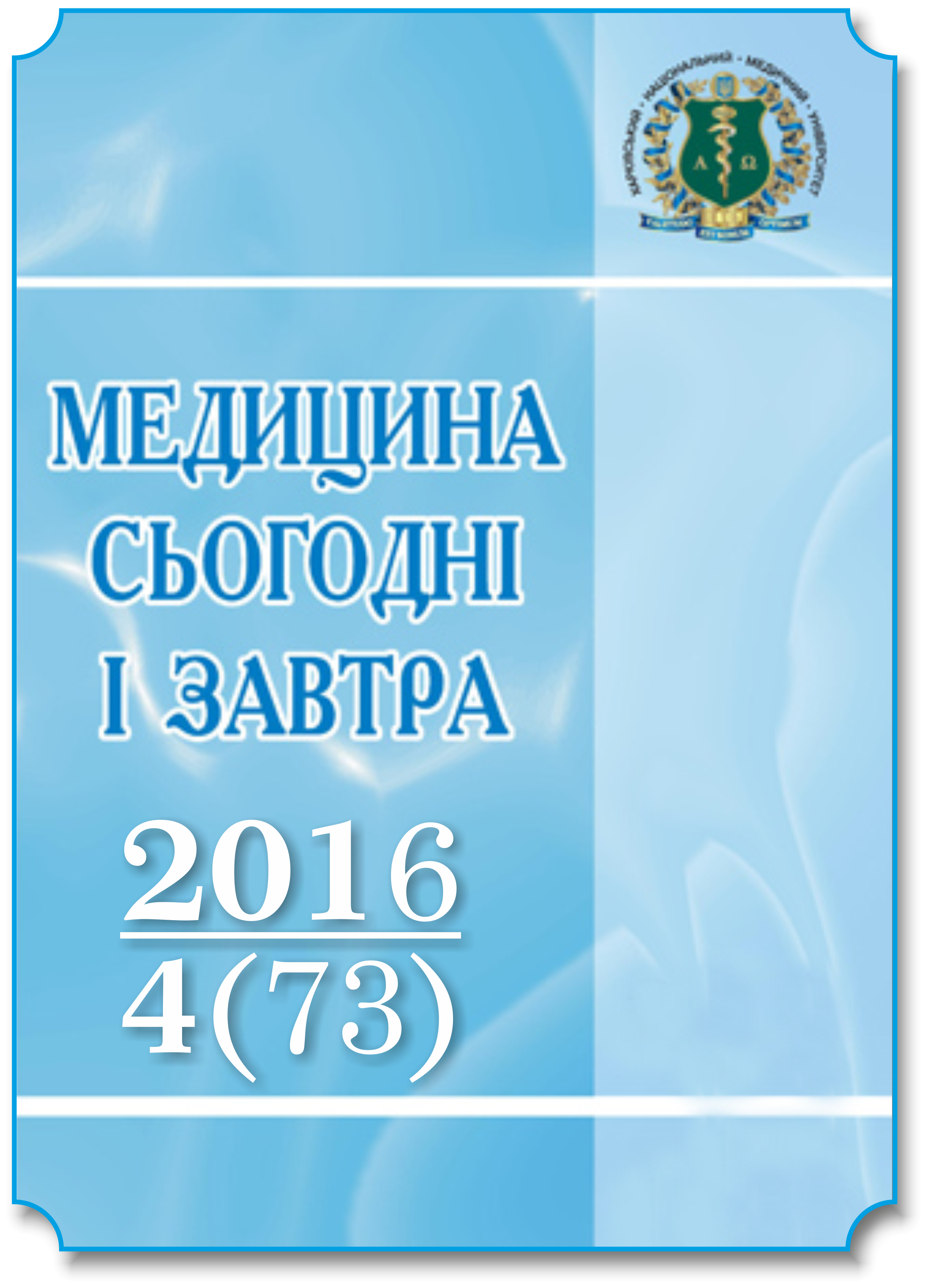Анотація
Вивчали ефективність застосування солу-медролу у профілактиці та лікуванні тривалої й об’ємної післяопераційної лімфореї після радикальної мастектомії з лімфодисекцією. Проаналізовано результати лікування 36 пацієнток (основна група), яким традиційну хірургічну та консервативну терапію з урахуванням прогностично несприятливих факторів ризику виникнення лімфореї в післяопераційному періоді доповнювали введенням солу-медролу. Всім хворим інтраопераційно були встановлені подвійні низьковакуумні дренажі, що дозволяли окрім евакуації рідини з післяопераційної рани відстежувати щодобовий об’єм лімфореї після мастектомії. У пацієнток основної групи мінімальний термін продуктивної лімфореї становив 6 діб, а максимальний – 10 діб. Застосування солу-медролу в основній групі дозволило знизити мінімальний термін продуктивної лімфореї на 3 доби, максимальний – на 6 діб, що свідчить про ефективність запропонованого методу консервативної післяопераційної терапії.
Посилання
Барсуков В. Ю. Рак молочной железы: современные принципы диагностики и комплексной терапии / В. Ю. Барсуков, В. Н. Плохов, Н. П. Чеснокова. – Саратов: Саратовский медицинский университет, 2008. – 309 с.
Влияние различных видов органосохраняющих операций на длительность лимфорреи у больных раком молочной железы / А. В. Дорошенко, Е. Ю. Гарбуков, Ю. Л. Кокорина, Н. А. Тарабановская. // Сибирский онкологический журнал. – 2008. – №1. – С. 41.
Давыдов М. И. Клиническая маммология: практическое руководство / М. И. Давыдов, В. П. Летягин. – Москва: АБВ-пресс, 2010. – 154 с.
Добренький М. Н. Влияние конституциональных особенностей больных, объёма хирургического вмешательства и неоадъювантной терапии на прогнозирование течения постмастэктомической лимфореи / М. Н. Добренький, Е. М. Добренькая. // Фундаментальные исследования. – 2009. – №9. – С. 42–43
Захарова И. А. Неоадъювантная химиотерапия в комплексном лечении местнораспространенного рака молочной железы / И. А. Захарова, А. П. Загадаев // Материалы научной конференции университета / И. А. Захарова, А. П. Загадаев. – Рязань: 2010. – С. 131–133.
Исмагилов А. Х. Улучшение непосредственных результатов лечения больных раком молочной железы путём разработки профилактических мер для снижения лимфореи / А. Х. Исмагилов, Р. Ш. Хасанов, Г. И. Шакирова // Материалы 4-й международной научной конференции "Онкология - XXI век". – Пермь, 2009. – С. 42.
Литвиненко А. В. Общие принципы системной глюкокортикоидной терапии / А. В. Литвиненко. // Український пульмонологічний журнал. – 2014. – №1. – С. 60–64.
Портной С. М. Современные принципы лечения больных первично-операбельным раком молочной железы / С. М. Портной. // Вестник Московского Онкологического Общества. – 2010. – №4. – С. 2–4.
Buttgereit F. Genomic and nongenomic effects of glucocorticoids / F. Buttgereit, C. Stahn. // Nature Clinical Practice Rheumatology. – 2008. – №10. – P. 525−533.
Donkervoort S. C. A case of chylous fistula after axillary dissection in breast-conserving treatment for breast cancer / S. C. Donkervoort, D. Roos, P. J. Borgstein. // Clinical Breast Cancer. – 2006. – № 2. – P. 171–172.
Hayat M. A. Methods of cancer diagnosis, therapy, and prognosis: Breast carcinoma / M. A. Hayat. – Heidelberg: Springer Science, 2008. – 695 p.
Okholm M. No effect of steroids on seroma formation after mastectomy / M. Okholm, C. K. Axelsson. // Danish Medical Bulletin. – 2011. – № 2. – P.1–5.
